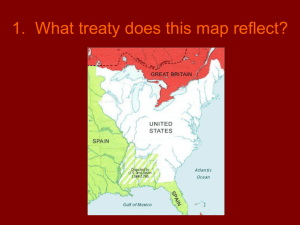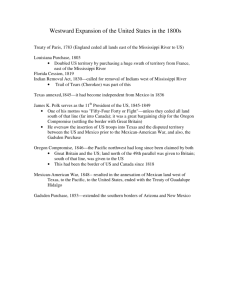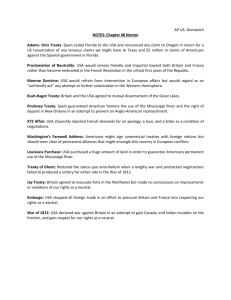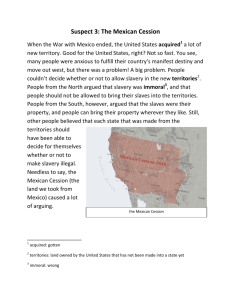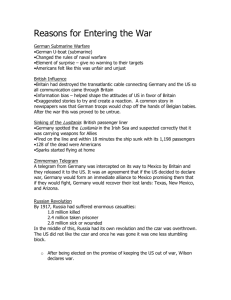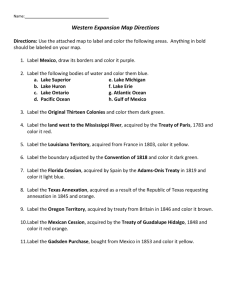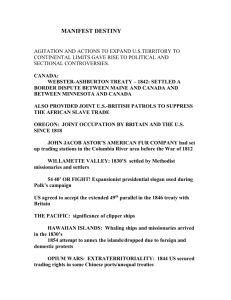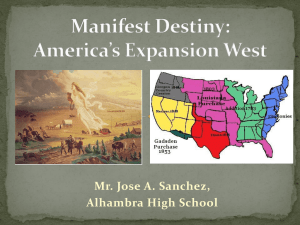Expansion of the United States
advertisement
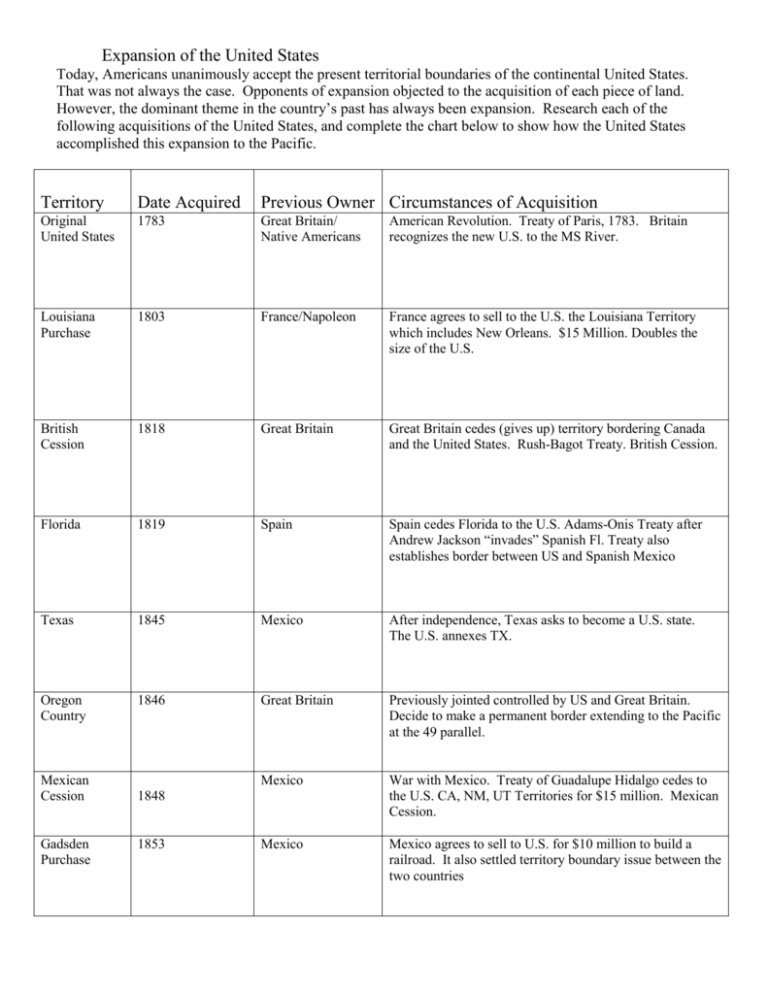
Expansion of the United States Today, Americans unanimously accept the present territorial boundaries of the continental United States. That was not always the case. Opponents of expansion objected to the acquisition of each piece of land. However, the dominant theme in the country’s past has always been expansion. Research each of the following acquisitions of the United States, and complete the chart below to show how the United States accomplished this expansion to the Pacific. Territory Date Acquired Previous Owner Circumstances of Acquisition Original United States 1783 Great Britain/ Native Americans American Revolution. Treaty of Paris, 1783. Britain recognizes the new U.S. to the MS River. Louisiana Purchase 1803 France/Napoleon France agrees to sell to the U.S. the Louisiana Territory which includes New Orleans. $15 Million. Doubles the size of the U.S. British Cession 1818 Great Britain Great Britain cedes (gives up) territory bordering Canada and the United States. Rush-Bagot Treaty. British Cession. Florida 1819 Spain Spain cedes Florida to the U.S. Adams-Onis Treaty after Andrew Jackson “invades” Spanish Fl. Treaty also establishes border between US and Spanish Mexico Texas 1845 Mexico After independence, Texas asks to become a U.S. state. The U.S. annexes TX. Oregon Country 1846 Great Britain Previously jointed controlled by US and Great Britain. Decide to make a permanent border extending to the Pacific at the 49 parallel. Mexico War with Mexico. Treaty of Guadalupe Hidalgo cedes to the U.S. CA, NM, UT Territories for $15 million. Mexican Cession. Mexico Mexico agrees to sell to U.S. for $10 million to build a railroad. It also settled territory boundary issue between the two countries Mexican Cession Gadsden Purchase 1848 1853

